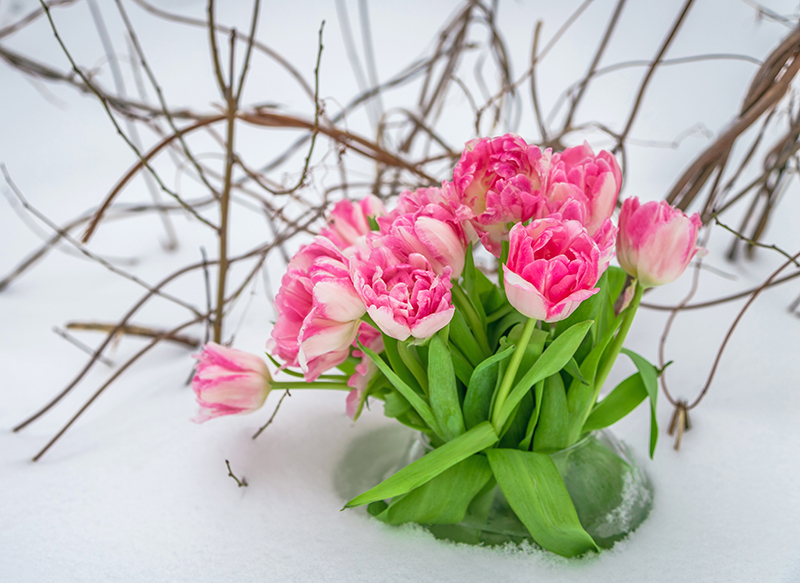Immerse yourself in 7 fascinating secrets about tulips
Posted on 17/08/2025
Immerse Yourself in 7 Fascinating Secrets About Tulips
Tulips are more than just a beloved spring flower; they are a symbol of love, beauty, and rich history. Originating from parts of Central Asia and adored throughout the world, these vibrant blooms have entranced generations with their charm and mystery. Are you ready to uncover the hidden stories behind these enchanting flowers? Below, we'll dive deep into 7 fascinating secrets about tulips that will leave you with a newfound appreciation for these classic blooms.

1. The Remarkable Journey: Tulips' Global Origins
Many people associate tulips with the Netherlands, but did you know these flowers have a much larger global footprint? The origin of tulips can be traced back to the mountainous regions of Central Asia, including Kazakhstan, Iran, Afghanistan, and parts of China. Tulips grew wild among rocky slopes, thriving in the harsh climates of the region for centuries before becoming international icons.
- Wild Tulips in Asia: The original tulip species look quite different from today's familiar garden varieties.
- Spread Through Trade: Silk Road traders carried tulip bulbs westward, introducing them to new continents.
- Ottoman Obsession: The Ottoman Empire played a crucial role in the cultivation and popularity of tulips before their introduction to Europe.
Fun Fact: In the Ottoman Empire, the tulip was a symbol of paradise, often featured in poetry, fabric designs, and palace gardens.
2. Tulip Mania: The World's First Economic Bubble
Tulip Mania is one of the most astonishing chapters in the economic history of the world. In the 17th century, tulip bulbs became so valuable in the Netherlands that they were used as a form of currency. Prices skyrocketed as demand for rare and beautiful varieties increased, leading to a tulip-buying frenzy now cited as the world's first financial bubble.
- At the market's peak, a single tulip bulb could sell for the price of a lavish Amsterdam canal house.
- When the bubble burst in 1637, fortunes were lost overnight, and the Dutch economy was shaken.
- Tulip Mania is still referenced today as a cautionary tale against speculative bubbles.
Did you know? The iconic Semper Augustus tulip was the most prized and expensive variety, with its red and white streaked petals.
3. Tulips: A Symbol of Diversity and Endurance
Tulip species display remarkable variety, with over 150 species and more than 3,000 registered cultivars worldwide. Their dazzling spectrum of colors, shapes, and patterns makes them a favorite among gardeners and flower enthusiasts alike.
- Colorful Blooms: Tulips are available in almost every color of the rainbow, except for blue, which remains elusive to breeders.
- Unique Shapes: From classic cup forms to fringed, ruffled, and lily-flowered types, tulips offer striking diversity.
- Resilient Nature: Many wild tulip species are hardy, enduring challenging climates and poor soils--making them true survivors.
Takeaway: The incredible adaptability and diversity found among tulips are key reasons why they are prized in gardens across the world.
Special Mention: Black Tulips
The quest for the elusive "black tulip" has inspired botanists and novelists alike. While true black tulips do not exist, several varieties--like the Queen of Night--boast such deep purple hues they appear almost black. Their mystery continues to captivate flower lovers everywhere.
4. Tulips in Art, Culture, and Symbolism
Over the centuries, tulips have inspired artists, writers, and designers. In both East and West, they serve as powerful motifs in art and culture. Famous painters like Rembrandt created stunning still-life paintings featuring tulips, symbolizing wealth and fleeting beauty.
- In Persian and Turkish art: Tulips symbolize perfection and divine beauty, often featured in ceramics, carpets, and manuscripts.
- Dutch Golden Age: Tulip imagery adorned everything from fine china to family crests and public buildings during the period of Tulip Mania.
- The Language of Flowers: In Victorian floriography, tulips represented "perfect love" and "fame."
TIP: Gifting tulips has different meanings based on color--red tulips for romantic love, yellow tulips for cheerful friendship, and purple for royalty or admiration.
5. Unique Biological Features of Tulips
Tulips may seem simple, but they possess remarkable biological characteristics that set them apart from other spring bloomers. Here are some intriguing facts about tulip biology:
- Phototropism: Tulip stems and flowers move in response to light, a phenomenon known as phototropism. This means your bouquet will twist and bend toward the brightest source in your home!
- Flowering Mechanisms: Tulips "sleep" at night, closing up their petals and reopening with the morning sun. This helps protect delicate reproductive parts.
- Self-Propagation: Tulips propagate naturally by producing "offset" bulbs beneath the soil, ensuring longevity and multiplication each season.
Interesting Note: Not all tulips bloom at the same time! There are early, mid, and late-season varieties, allowing for a continuous show of color all spring long.
6. The Science and Magic Behind Tulip Colors
The stunning hues of tulip blooms are the result of complex genetic interactions. Pigments called anthocyanins and carotenoids give tulips their amazing palette, from fiery reds to sunshine yellows. Biotechnology and selective breeding are now pushing the boundaries further, with efforts to introduce novel colors and color patterns.
- Breaking Virus: Some famed "broken" tulips, with dramatic streaks of color, are caused by the tulip breaking virus. While harmful to the plant, it creates stunning visual effects.
- Blue Tulip Quest: Although tulips come in nearly every color, a true blue tulip remains undiscovered, as the blue pigment is absent from the plant's genetic code.
- Color Symbolism: The myriad shades of tulips each carry different meanings and are used for various festive occasions worldwide.
Fun Science Fact: The "broken" tulips of Tulip Mania fame owe their dramatic coloration to a virus, not breeding--a truth that remained a mystery for centuries!

7. Tulips in Modern Gardens: Cultivation and Care
Today, tulips remain a favorite for both amateur and professional gardeners. Modern cultivation techniques, advanced hybridization, and global festivals celebrate this beloved flower each year. Here are some tips and insights for success in your own tulip garden:
- Planting Depth: For best results, plant bulbs 6-8 inches below the soil's surface in the autumn for spring blooms.
- Sunlight Requirements: Tulips thrive in full sun with well-draining soil.
- After-Bloom Care: Allow foliage to die back naturally after flowering--this lets the bulb store energy for the next season.
- Protection from Rodents: Squirrels and other critters love tulip bulbs. Use wire mesh or netting to protect your garden treasures.
- Naturalizing Tulips: Some species, such as Tulipa tarda and Tulipa sylvestris, will return and multiply year after year when planted in suitable conditions.
LOOKING FOR MORE? Explore local tulip festivals or visit renowned gardens like Keukenhof in the Netherlands for an unforgettable, immersive tulip experience.
Conclusion: Discover New Wonder in Every Tulip
Tulips are much more than just beautiful flowers--they are carriers of centuries-old stories, cultural symbolism, and botanical marvels. From their ancient Asian roots to their starring role in global gardening, the secrets of tulips are sure to intrigue and inspire flower lovers and history buffs alike. Whether you are tending your own patch of bulbs or wandering through sweeping fields of color, let the vibrant world of tulips remind you of nature's diversity, resilience, and timeless allure.
Now that you've uncovered the seven fascinating secrets about tulips, you can truly appreciate what makes these flowers such a special part of our gardens, art, and history. So next time you spot a tulip, take a moment to admire not just its beauty, but the incredible journey behind its bloom.
Bonus Tip: Share these tulip facts with friends or family and become a tulip ambassador--spread the love for this enchanting flower far and wide!
Latest Posts
Boost Your Garden's Beauty with Hydrangea Care Techniques
Efficient Ways to Make Your Flowers Stay Vibrant
Discover the Symbolic Beauty of Peony Flower Colors





